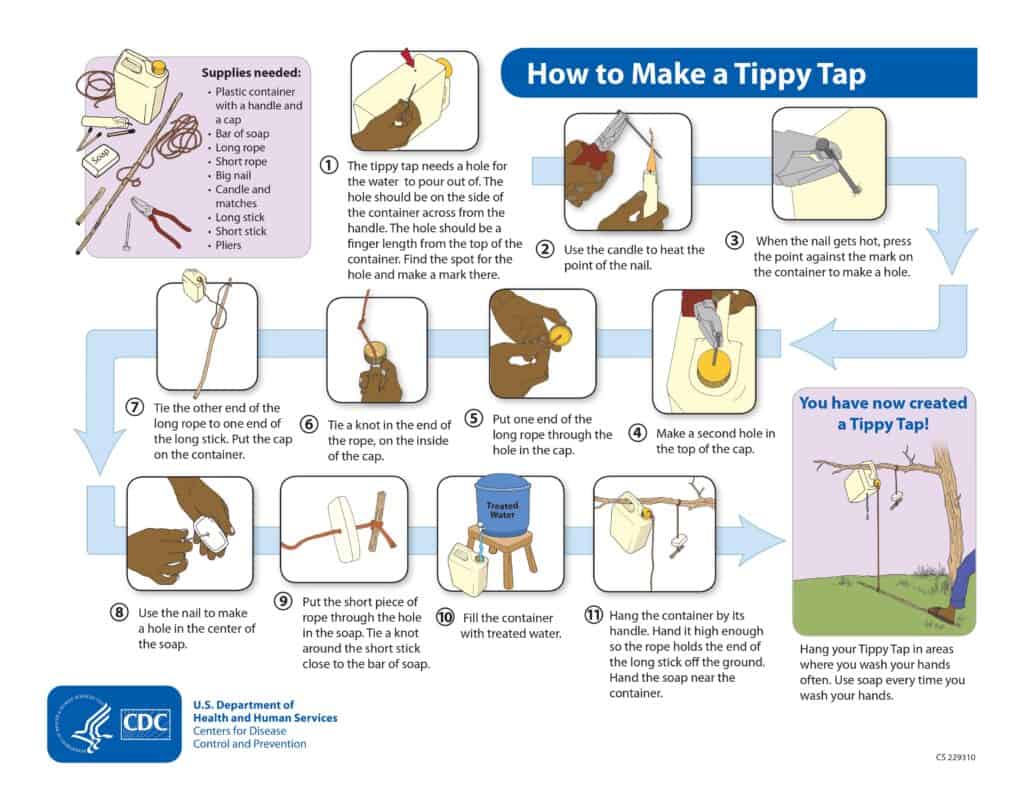- filed under: Outdoor Classroom Set Up
How to Build a Tippy Tap
Once Covid became a realty in our schools, the urgency to take students outdoors increased. Across Canada, a return to face to face learning saw public health officials, district administrators, and families calling on educators to find creative ways to get more kids outdoors more often.
A solution for handwashing
One known barrier that exists for educators is the lack of hand washing facilities outdoors. Short of spending untold funds on new plumbing and external wash stations, a tippy tap has become a viable, almost free alternative, that is both effective and a practical solution to the need for increased hand washing outdoors both during this pandemic, and going forward.
This post serves as a curation of global resources on how to build a tippy tap for use in your outdoor classroom.
Tippy taps have been used extensively across the third world from commonly available materials. The purpose of a tippy tap is to create a hand wash station that uses the foot to tip the tap, thereby avoiding multiple hands touching taps, which can reduce disease transmission.
I encourage you to use these curated graphics to inspire an applied design, skills & technology (ADST) project in your school! Perhaps you can set up a competition where each classroom creates a prototype that can be voted on and tested for kid-proof durability!
How to build a tippy tap infographics
This infographic from Water Aid offers clear instructions:


This infographic is from the US Centres of Disease Control:
These graphics are provided in multiple languages from Tippytap.org. Visit their website to see if they have a version in the language you wish to share it:
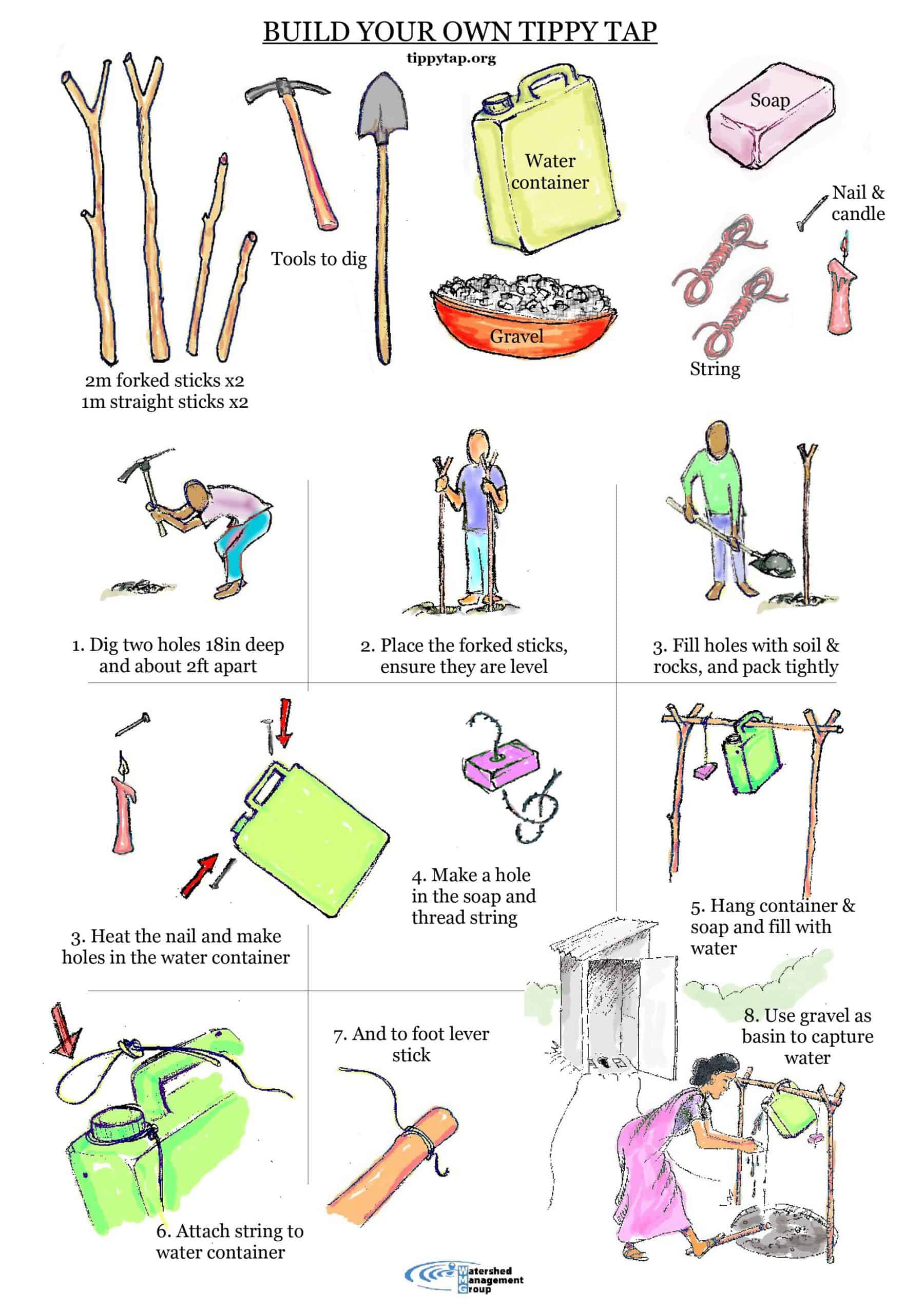
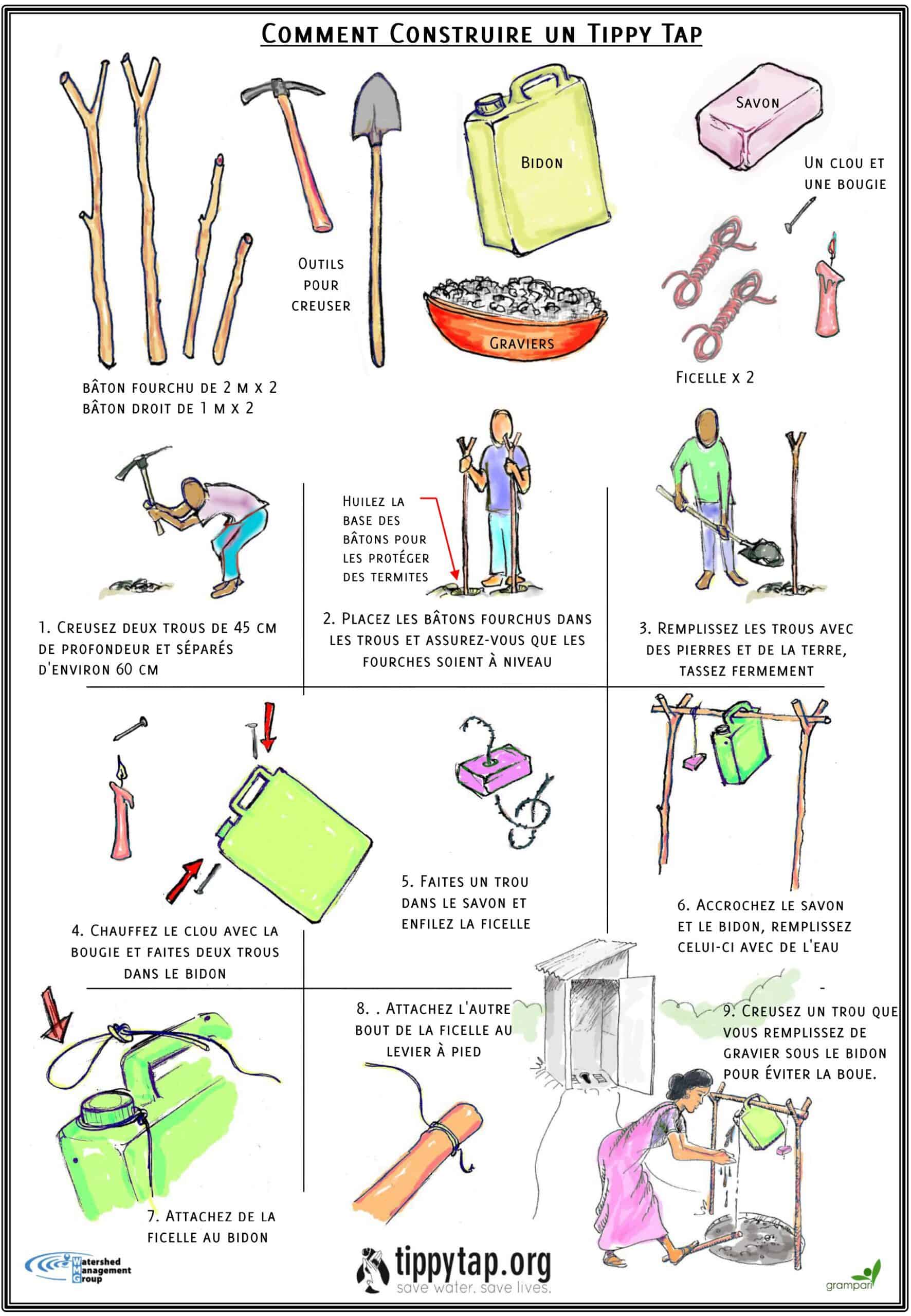
Other online resources:
Step by step instructions with photographs from the University of Twente
A step by step video from a community health worker
This a great video from Unicef with instructions and a materials list
Our prototype
Here is an example of the portable tippy taps we made in our outdoor classroom from scraps of wood we had. I would say that the pedal was not durable enough for the rough use of hundreds of kids stomping on it. Future prototypes will likely use the simple stick, as shown in the graphics shared above. The pedal was also problematic because the water fell on kids’ shoes. The stick would allow the child to keep their shoes clear of the falling water. We also tried the bar of soap tied on a nylon, but I think in future prototypes, I would use a hand pumped soap dispenser. I would also say that the 4 litre milk jug easily washed a entire class of children’s hands, often more than once! The tippy tap does provide a good opportunity to practice water wise strategies and have students realize how little water they need to use to wash their hands!
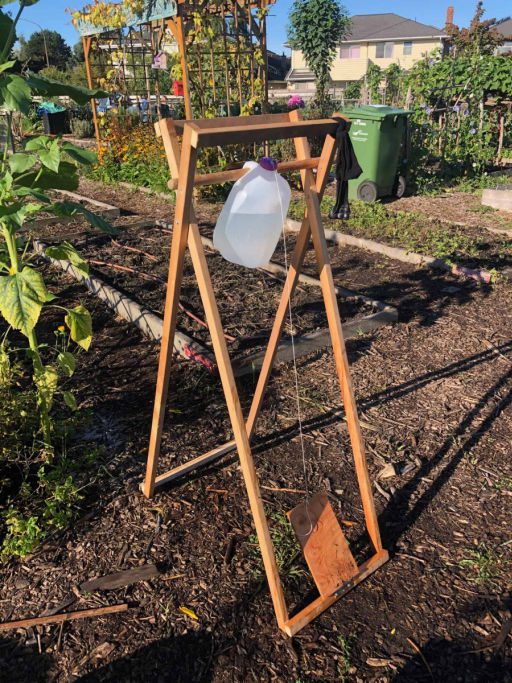
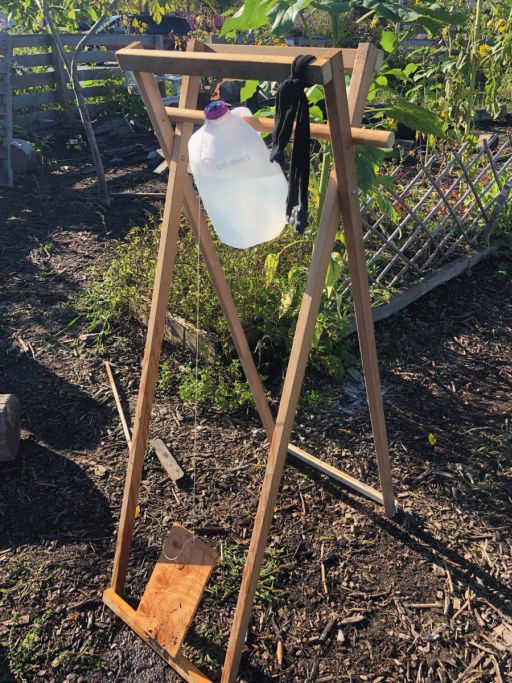
Overall, the tippy tap offers a fantastic opportunity to build a real life prototype to solve a real world problem. Have fun with it, and tag me on your social media shares so I can see which features of your prototypes are most effective!
Grab more ideas for teaching outdoors and how to design your outdoor classroom learning spaces here:

